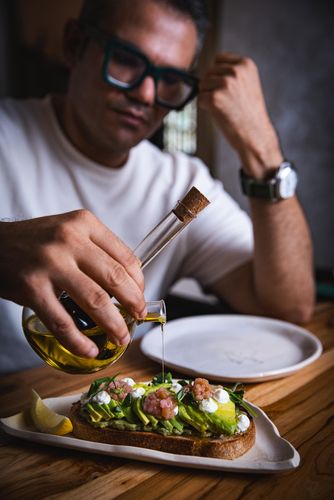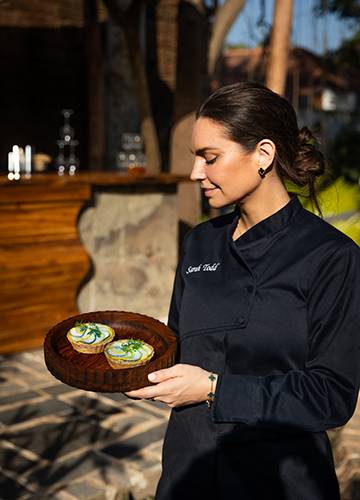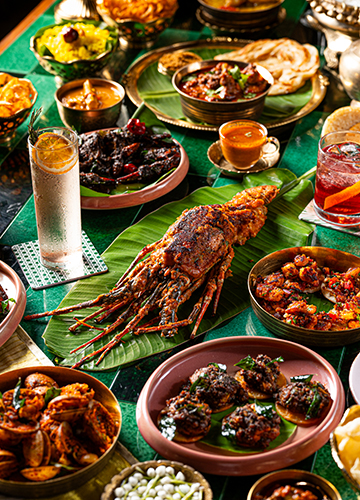Goa is no longer a vacation,” says restaurateur Tarun Sibal. “It is a plan.” That plan now features a new destination: Premium restaurants.
Chilled beer and shisha at a beach shack, partying at Tito’s in Baga, parasailing at Calangute, flea market shopping at Anjuna, and a whole lot of people-watching and bike riding. This was what a vacay in India’s favourite leisure destination meant to the one crore tourists who land up in Goa every year. Not any longer.
Going ‘beachless’ is the new trend, as a spate of new restaurants and activities that do not involve the beach pops up across the sunshine state. Rough estimates are that some 150 premium restaurants/cafe bars have opened up in just the past two years or so. Their combination of world class menus, signature cocktails and craft spirits, all in the stunning backdrop, have spurred a veritable restaurant boom in Goa.
“Goa is the food capital of India now,” says Prashant Pallath, co-owner of Tanjore Tiffin Room, a popular Mumbai eatery that opened an outpost last year in Goa. “Even in Delhi (another claimant to the title), you do not get this combination of all kinds of foods and customers from around the world. Anybody who wants to make a name in the restaurant business has to open in Goa.”
And everybody is. Rohit Khattar, who runs Indian Accent as well as the culture and hospitality sections of the India Habitat Centre, chose Goa to open his first original restaurant outside of Delhi NCR. Hosa in Bardez serves a unique blend of traditional and modern south Indian food, and Fireback has a Thai menu. “We had been looking at Goa; it is slowly emerging as one of the major food destinations of the country,” says Nitin Mather, COO of Khattar’s holding firm EHV International.
Last year, celebrity chef and model Sarah Todd opened The Sanctuary, which has a menu that is an interplay between world cuisine and local flavours. Riyaz Amlaani, one of the biggest restaurateurs in India, has branches of Anti Social and Smoke House in north Goa. Olive (Delhi), Elephant & Co (Pune) and VietNom (Gurugram) have all set up outposts in the coastal state.
This transformation from a hippie haven to the culinary capital of the country has been a joyous accident of circumstances. For long, food options in Goa meant cheap street-side or beach-side joints offering lacklustre food and lousy service, or beach shacks catering primarily to the partying impulses of the visiting crowd or the long-staying charter tourists from Russia and Israel. The bigger resorts to the south of the state that catered to the well-heeled tried to remain self-contained à la properties in the Maldives, offering all options from food to sundowners to clubbing and spa on the premises.
The focus, and the overwhelming common logic, was that everything had to be on the seaside. Even while upmarket standalone restaurants opened in the past decade, like A.D. Singh’s Olive Beach, or Goa’s own legendary restaurateur Mariketty Grana’s place Thalassa, a beach view was de rigueur.

That seems to have changed. As the pandemic dried up the flow of foreign tourists and even the busloads of budget travellers, it brought in a new type of customer―city-dwelling work-from-home professionals from across the country who had always nursed the dream of living in Goa but could not because of their jobs. “The chartered tourists have been replaced by the domestic corporate crowd,” said Abraham David, a tour operator in Porvorim.

A property boom ensued to cater to the hordes of settlers from across the country, naturally followed by a spate of restaurants and bars. Still the prices were low compared to real estate in malls and leisure hubs of Mumbai and Delhi NCR. “If I do this in Mumbai, it would cost me three times more, minimum,” said serial restaurateur Dishant Pritamani. ‘This’ refers to The Second House in Saligao, a hip yet laid-back locality in north Goa. The only thing missing is that it is nowhere near the sea, but that is hardly an issue for a Goan destination anymore. “A few years ago, a Goa visit meant we would have gone only to the beach,” said Pritamani. “But now people are actually going out and trying all the new places on offer.”
The USP is a combination of cutting edge cuisine coupled with inventive alcohol menus and a killer backdrop. The last attribute is what pulls in the customer, before the food and drinks take over―most of the happening new places, from Hosa to Barfly to The Second House, are housed in Portuguese villas painstakingly renovated and spectacularly done up.
So while Tanjore Tiffin Room is nothing like a tiffin place you will find in Tamil Nadu, with its candle-lit al fresco dining and bistro interiors, The Second House used AI not just in reconstructing the dilapidated bungalow, but also in all the art present throughout the place, as well as projection mapping that lets the place acquire any desired character or theme. Bawri, in Assagao, has koi ponds separating seating areas.
The ‘product forward’ food and drinks also have a role to play, but perhaps the biggest impact could be Goa’s unique mix of aspirational people. “North Goa has become a big, cosmopolitan kind of place where people across the country come in to eat and make merry,” says Tarun Sibal, who also runs restaurants in Bengaluru, Delhi and Gurugram. “Goa is way ahead of what is happening in India’s F&B space, with a lot more experimentation.” Barfly, one of Sibal’s two outposts in Goa (the other being the popular Titli), for instance, specialises in an exclusive and inventive agave bar section.
“Goa has character, with a floating populace of settlers and tourists coming and going. Which means there are different types of people who are ready to experiment a lot more,” says Sibal.
While the boom has seen a drive from Assagao to Anjuna peppered with new restaurants all along the way, it has also brought with it issues such bounties bring in their wake. The post-pandemic boom attracted not just restaurateurs and chefs, but also entrepreneurs, speculators and real estate sharks. The result? Too many places chasing the same floating crowd, with the experience not living up to Instagram ‘hype’ in many cases.
A solution, many feel, is wooing back the missing-in-action foreign tourists. “The number of foreign tourists coming to Goa has diminished considerably,” says Mathur. “Domestic tourism has increased but the foreign tourist is good news not only for the newly opened restaurants but also for hotels and other adventure tourism companies as well.”
Though some food experts like Vir Sanghvi have predicted that Goa’s restaurant boom might be over, entrepreneurs say the best is yet to come. “There is more supply than demand,” says Pritamani. “Many restaurants are empty. That always happens in a boom, but my plan is to be the most interesting place with the most interesting food. That will keep me ahead of the curve.”




